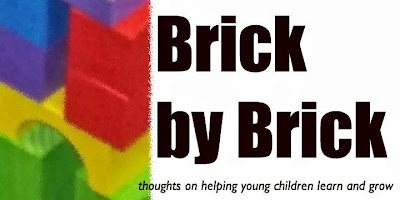Watching them reminded me of the importance of context to the classroom.
And I remembered how much of an impact the kids' own knowledge, experience, and interests bring to the learning activity.
Kids interact with materials and ideas, filtering it through what they already know and connecting it into their overall knowledge.
Looking at all those great constructions, I think about what I could talk about. Patterns, symmetry, shapes, colors. I listen as the kids tell me elaborate stories about what's happening (and we develop vocabulary and concepts about character and plot).
The information or activity or concept must be meaningful to the kids. It must connect to what they already know. It must have context (to the child) to be valuable and meaningful.
The information or activity or concept must be meaningful to the kids. It must connect to what they already know. It must have context (to the child) to be valuable and meaningful.
The best way to learn about letters? Names! That has some meaning and context and helps the child identify these different squiggles/symbols to a concrete concept. (I posted about names a while back.)
The best way to master number sense? Objects! A child understands what "3" means by handling three items. He begins to make connections between numbers (and addition and subtraction) by putting groups of items together or taking them apart.
The best way to begin to read? Known Words! Use words that a child already recognizes (restaurant and store names, traffic signs, food labels). Those words are meaningful to the child and he will begin to recognize them - both as logos and in regular print. (Check out this post from Pre-K Pages about environmental print.)
I want to create a learning environment that builds on what kids know and creates connections for other concepts.
(Plus I really like blocks!)




